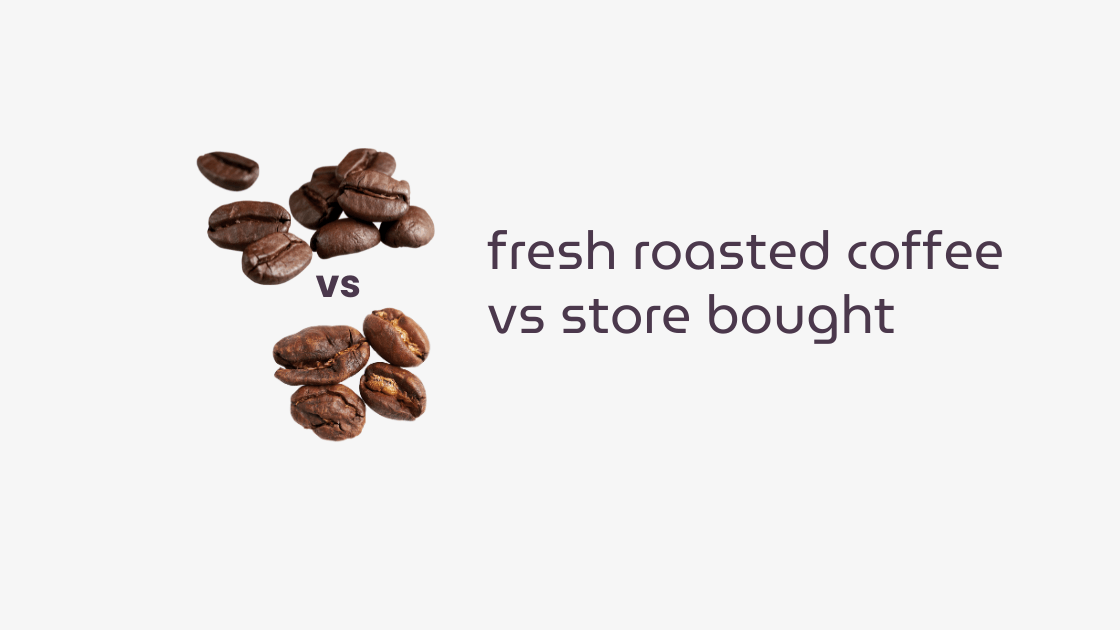
Fresh Roasted Coffee vs Store Bought: What’s the Real Difference?
Not all coffee is created equal—especially when it comes to freshness. Here’s how fresh-roasted coffee compares to what’s sitting on the store shelf, and why it matters for flavor, quality, and your daily ritual.
Not all coffee is created equal—especially when it comes to freshness. Fresh roasted coffee vs store bought isn’t just about packaging or branding. It’s about how recently your beans were roasted, how they were handled, and how much flavor is left in your cup. In this post, we’ll break down the real differences between store shelf coffee and freshly roasted beans, and why it matters more than you might think.
Let’s break it down.
What Is Fresh Roasted Coffee?
Fresh roasted coffee is exactly what it sounds like: coffee that’s roasted to order and delivered while it’s still at peak flavor.
At Happi Coffee, we roast in small batches and ship directly—usually within 1–3 business days of roasting. That means when your beans hit your doorstep, they’re brimming with aroma, oils, and flavor compounds that haven’t had time to fade.
Peak freshness usually happens between days 3 and 30 after roasting. Beyond that window, flavors start to flatten and aroma fades, especially if the beans have been exposed to air, light, or heat.
What About Store Shelf Coffee?
Most supermarket coffee is mass-produced, roasted in bulk, and often stored for months before it ever hits the shelf.
Even if it says it’s “fresh” or “premium,” store-bought coffee is typically:
- Roasted weeks (if not months) in advance
- Packaged in vacuum-sealed or nitrogen-flushed bags to extend shelf life
- Often lacks a visible roast date—just a vague “best by” stamp
By the time you brew it, the flavors have likely dulled, and the aromatic complexity is long gone.
Side-by-Side Comparison
| Feature | Fresh Roasted Coffee (e.g., Happi) | Store Shelf Coffee |
|---|---|---|
| Roast Timing | Roasted to order, shipped within days | Roasted in large batches, months in advance |
| Flavor Profile | Vibrant, aromatic, nuanced | Dull, flat, sometimes bitter |
| Packaging Date | Usually shows roast date | Typically only has best by date |
| Shelf Time Before Brew | 3–30 days (ideal window) | Often 60–180+ days |
| Sourcing | Often traceable, single origin or fresh blends | Usually blended for consistency |
| Storage Conditions | Controlled until shipped | Sits on shelves under varying temps/light |
Why It Matters
If you’ve ever had a truly great cup of coffee—one that made you stop mid-sip—you’ve likely tasted coffee that was fresh roasted.
The flavor difference isn’t subtle. When beans are fresh:
- You taste origin: citrus from Ethiopia, nutty notes from Brazil, cocoa from Colombia.
- You smell those sweet, toasty aromas as soon as you open the bag.
- You don’t need sugar or cream to mask bitterness—it’s balanced by nature.
With store-bought coffee, those nuanced notes fade. You’re left with a generic “coffee” flavor that lacks personality.
☕ Want to understand why flavor fades—and how to preserve it? Check out our Coffee Freshness Guide →
How to Spot Truly Fresh Coffee
Not all “fresh” coffee is created equal. Look for:
- A visible roast date on the bag (not just a best-by)
- Small-batch roasters or direct-to-consumer brands
- Whole bean options (they stay fresher longer than pre-ground)
- Fast shipping post-roast (like ours at Happi Coffee)
If your coffee sits in a warehouse or on a shelf for months… it’s not really fresh.
Ready to Taste the Difference?
Fresh-roasted coffee changes the game. It’s the easiest way to upgrade your morning routine without needing fancy gear.
Want your coffee to be bold, balanced, and bursting with flavor? Start with beans that were roasted just days ago—not months. And if you’re wondering how to brew it best, check out our Coffee Brewing Guide for tips, methods, and how to match your grind and roast to your gear.
Once you’ve got your method down, explore our Signature Blends and Single Origins - fresh-roasted and full of flavor, no matter how you brew.
0 comments